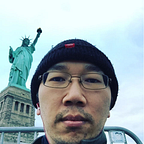Why it’s difficult to build teams in high growth organisations
By “high growth”, I mean in terms of employee count and roughly doubling or more every year. Even at slower growth rates, some of the phenomena I’ll describe may be relevant.
Two reasons why building teams in high growth is difficult: can’t assume stable teams, can’t rely on cultural osmosis.
In high growth, the odds are the teams won’t be stable
There are several options to accommodate new people:
- Sink or Swim. Keep the older teams as-is and add the new people to brand new teams. This keeps teams stable and likely ensures that all new teams will struggle;
- Split and Absorb. Split up the older teams (aka not stable) and absorb new people in the new teams. This means there’s a mix of veterans and newbies;
- Absorb and Split. Add new people to existing teams. This will eventually lead to the teams becoming too large (aka not stable) and splitting (also not stable).
The only option where some teams are stable is Sink or Swim, and even then, the new teams aren’t stable.
The default culture is not what pre-exists
The newbies outnumber the veterans in high growth. Default culture is not what pre-exists but whatever new people bring with them. Even with careful selection, it’s unlikely that cultural assumptions match up perfectly.
How not to deal with high growth: presumptive team splitting
Split and Absorb is presumptive team splitting.
Presumptive team splitting is splitting a team before you need to, whether based on subjective anticipation or some kind of quantitative criteria (e.g., teams should have no more than 9 members).
Presumptive team splitting leads to unclear missions and missing skills, which leads to people filling time with low-value activity, which leads to boredom, which leads to disengagement and/or quitting.
How to deal with high growth: structure follows strategy, organic org design, deliberate culture
Structure should be stable where strategy is stable; structure should be flexible where strategy is volatile
“Unless structure follows strategy, inefficiency results.”
Alfred D. Chandler Jr.
For example, if a broader department-level product strategy is stable while more local tactics are volatile, you should want the structure and shared identity of the department to be stronger and more stable than team-level structures and identities.
Absorb and Split
I prefer the Absorb and Split pattern. I’ve talked about this before as “refactoring organisations”:
- Add new people to existing teams.
- Let the seams appear naturally, that is, watch the communication flow and interaction patterns, especially the dynamics of meetings. Eventually, you’ll notice sub-groups appearing and certain rituals getting clunkier;
- Start nudging things closer, that is, separate rhythms (aka cadences) and events;
- And eventually formalise the split. By this time, it’s mostly just an acknowledgement and non-event.
Your target reaction for an org change is something along the lines of “finally!” or “well, obviously!”.
Deliberate culture or random strategic problems
If you are not deliberate about culture, especially basic underlying assumptions, but also reinforcing with espoused beliefs and artefacts, you will have random strategic problems.
By culture, I’m referring to how Schein defines it:
- Artifacts;
- Espoused beliefs and values;
- Basic underlying assumptions.
… and mostly the “basic underlying assumptions” part.
Also borrowing Schein, there is no such thing as a universally bad culture, there are only cultures that are more or less compatible with your strategy.
By strategy, I’m referring to Rumelt’s strategy kernel:
1. Diagnosis;
2. Guiding policy;
3. Coherent actions.
An incompatible culture means basic underlying assumptions make it difficult or impossible to:
- Accept the strategic diagnosis;
- Accept the strategic guiding policies;
- See the main strategic actions as coherent and sensible.
If you are not deliberate about culture, especially basic underlying assumptions, but also reinforcing with espoused beliefs and artefacts, you will have random strategic problems.
Occupy the culture space with role models, systems, symbols
Default culture in high growth organisations becomes whatever new people bring with them… unless you are much more deliberate in occupying that space.
From Systems Leadership, there are three ways to occupy the culture space:
- Role modeling: Influential, powerful people “walking the talk”, “practicing what they preach”;
- Systems: structure, policies, tools to reinforce desired behaviour;
- Symbols: concrete representations of organisational mythology (e.g., slogans, stories, value statements, etc.). Symbols are useful when role modeling and systems are aligned; they remind us of hypocrisy and generate cynicism when role modeling and systems are not aligned.
